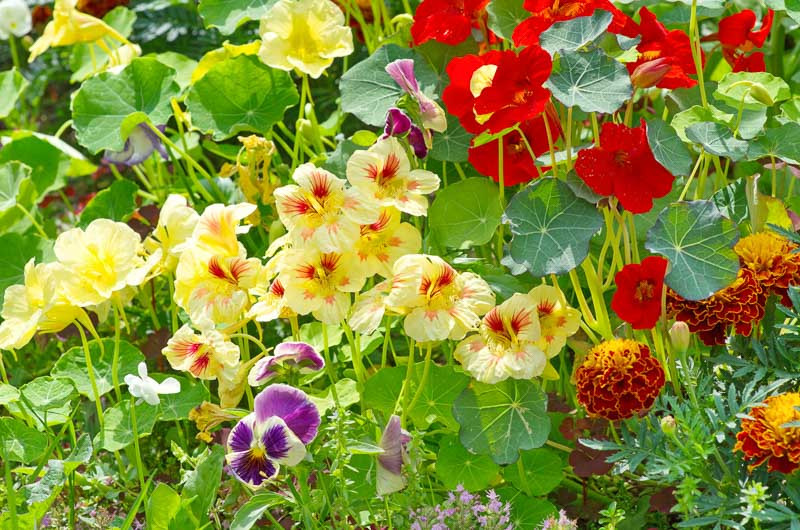Tropaeolum
Tropaeolum, commonly known as nasturtium, is a genus of flowering plants that belongs to the family Tropaeolaceae. These beautiful and colorful plants are native to South and Central America but are widely grown in gardens around the world. Nasturtium plants are popular for their brightly colored flowers and unique foliage. They are also prized for their culinary and medicinal properties.
Hardiness: Nasturtiums are perennial in hardiness zones 9-11 and grown as annual plants elsewhere.
Flowers: Nasturtiums come in a range of vibrant colors, including yellow, orange, red, and burgundy.
Foliage: They have distinctive, round leaves that are usually a bright green color but can sometimes be variegated or even purplish.
Blooming season: Nasturtium blooms from winter through spring in mild winter areas and from summer to fall in colder climates.
Habit: Some varieties of nasturtiums have trailing or climbing habits, making them ideal for growing in hanging baskets or training up trellises.
Versatility: One of the most appealing aspects of nasturtiums is their versatility. They are equally at home in containers, borders, or vegetable gardens. They make great companion plants for vegetables like tomatoes, cucumbers, and beans, as they repel pests like aphids and whiteflies.
Edible: The flowers and leaves are edible and have a peppery, slightly bitter flavor that adds interest to salads and other dishes. The seeds can be pickled and used as a substitute for capers.
Medicinal properties: Nasturtiums are rich in vitamin C and have been used to treat respiratory infections and urinary tract infections.
Pollinators: Bees, butterflies, hummingbirds, and other pollinators are drawn to the flowers, making Nasturtium a valuable addition to the vegetable garden.
Culture: Growing nasturtiums is relatively easy, as they are tolerant of a wide range of growing conditions. They prefer well-drained soil and full sun to partial shade.
Care: Nasturtiums thrive on neglect, and few pests or diseases bother them. They are no favorite to deer.
Whether used for culinary or medicinal purposes or simply for their aesthetic appeal, nasturtiums are a valuable and attractive addition to any garden.

